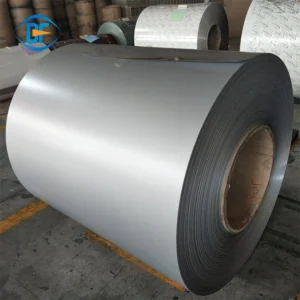Electrical Steel: The Core Material Powering the Future of Energy Systems
As global energy consumption continues to rise, the demand for more efficient and reliable electrical infrastructure is at an all-time high. At the heart of this development is electrical steel—a vital material used in the cores of transformers, motors, and generators. Its unique magnetic properties enable efficient energy conversion, reduced power loss, and greater operational stability.
Electrical steel plays an especially important role in supporting the energy transitions underway in Europe and the Middle East. From renewable power generation to smart grid integration, this specialized steel is helping industries and utilities meet the challenges of modern energy systems.
In this article, we will explore what electrical steel is, how it is manufactured, its primary applications, and why it remains essential to the future of electrical engineering.
What Is Electrical Steel?
Electrical steel is a special class of steel engineered to have superior magnetic properties, particularly high permeability and low core loss. Also known as silicon steel or lamination steel, it is designed to efficiently conduct magnetic fields with minimal energy dissipation. The most common forms include:
- Grain-Oriented Electrical Steel (GOES):
Optimized for use in transformers where magnetic flux follows a single direction. - Non-Grain-Oriented Electrical Steel (NGOES):
Used in motors and generators where magnetic fields rotate or vary in direction.
The performance of electrical steel directly impacts the efficiency, size, and lifespan of electrical devices—making it a foundational component in energy systems worldwide.
Key Properties of Electrical Steel
Electrical steel is designed with the following characteristics:
- High Magnetic Permeability: Allows magnetic fields to pass easily, reducing the energy required to magnetize the core.
- Low Core Loss: Minimizes the conversion of electrical energy into heat during magnetization cycles.
- Low Coercivity: Makes it easier to switch magnetic polarity with minimal energy input.
- Good Surface Insulation: Special coatings prevent short-circuits and reduce eddy current loss.
- Mechanical Strength: Withstands the stress of thermal expansion and electromagnetic forces in high-voltage environments.
These properties are fine-tuned through chemical composition and sophisticated manufacturing processes.
How Is Electrical Steel Manufactured?
The production of electrical steel involves several key stages, each carefully optimized to enhance magnetic performance:
- Hot Rolling: Raw slabs of steel are rolled into thin sheets.
- Pickling and Cold Rolling: Removes impurities and reduces thickness for precise grain control.
- Annealing: Heats the steel to realign its microstructure and reduce internal stress.
- Decarburization: Lowers the carbon content to improve magnetic softness.
- Coating Application: A thin, insulating layer is applied to the surface to reduce eddy currents and oxidation.
- Grain Orientation (for GOES): Through secondary recrystallization, grains are aligned to enhance directional magnetic performance.
Advanced facilities also incorporate laser scribing, domain refinement, and AI-based quality inspection for even greater efficiency and consistency.
Applications of Electrical Steel
Electrical steel is essential for a wide variety of applications that require the efficient transformation and movement of electrical energy:
1. Transformers
- Power and distribution transformers rely on grain-oriented electrical steel to minimize energy loss during voltage conversion.
- CRGO (cold rolled grain oriented) steel is specifically used in core laminations.
2. Motors
- Non-grain-oriented steel is used in electric motors for vehicles, appliances, and industrial machinery.
- High-speed motors demand advanced NGOES grades for improved performance and reduced noise.
3. Generators
- Efficient magnetic flux management using electrical steel is crucial in large-scale power generation.
4. Inductors and Reactors
- In energy storage systems and AC/DC conversion, electrical steel helps reduce heat loss.
5. Renewable Energy Systems
- Solar inverters, wind turbine generators, and battery management systems use electrical steel to manage variable loads effectively.
As Europe and the Middle East pursue renewable energy integration and grid modernization, the use of electrical steel is expanding across all these domains.
Electrical Steel in Europe and the Middle East
Europe:
The European Union has committed to a green energy future. Electrical steel is central to this mission:
- Grid Upgrades: Aging transformer fleets are being replaced with low-loss alternatives.
- EV Expansion: Electrical steel is vital in the manufacture of energy-efficient electric vehicle motors.
- Energy Efficiency Directives: Regulations push for materials that reduce losses and improve sustainability.
Middle East:
Rapid industrialization and urban expansion make electrical steel a strategic material:
- Smart Cities: Efficient transformers and motors are key to powering high-tech, low-emission cities.
- Renewable Integration: As countries like Saudi Arabia and the UAE scale up solar and wind projects, demand grows for efficient electrical infrastructure.
- Desert Climates: Electrical steel ensures durability and performance even in extreme operating conditions.
Both regions are increasingly turning to advanced grades of electrical steel to meet their performance and environmental goals.
Technological Advancements
The electrical steel industry continues to evolve with innovations that improve magnetic performance and sustainability:
- Super High-Permeability Grades: Enhance magnetic performance for compact, ultra-efficient transformers.
- Thin Gauge Laminations: Allow manufacturers to reduce weight and improve cooling.
- Eco-Friendly Coatings: Reduce environmental impact without sacrificing insulation properties.
- AI and Sensor-Driven Quality Control: Ensures uniform magnetic properties and surface insulation.
These technologies are critical in meeting increasingly stringent energy efficiency regulations and user expectations.
Environmental and ESG Considerations
Electrical steel aligns with environmental and sustainability initiatives:
- Energy Savings: Reduces transmission losses and transformer heating, lowering total energy consumption.
- Recyclability: Electrical steel can be recycled multiple times with minimal loss in performance.
- Carbon Neutrality: Producers are investing in low-carbon and renewable-powered steelmaking processes.
- Eco-Compliance: Most high-grade electrical steels comply with RoHS, REACH, and other global standards.
With ESG (Environmental, Social, and Governance) performance now a key metric for industrial and utility companies, electrical steel supports responsible infrastructure development.
Future Outlook
The global market for electrical steel is expected to grow significantly over the next decade, driven by:
- Expansion of Smart Grids and Microgrids
- Electrification of Transportation
- Renewable Energy Projects
- Industrial Automation
As electrical systems become more complex, the need for materials that combine reliability, performance, and sustainability will only increase. Electrical steel, with its unique properties and evolving technology, is well-positioned to meet these demands.
Conclusion
Electrical steel is a foundational material in the world’s transition to more efficient and sustainable energy systems. Its ability to conduct magnetic fields with low loss makes it ideal for transformers, motors, and generators—the building blocks of modern electricity networks.
As Europe and the Middle East continue to modernize and decarbonize their grids, electrical steel will remain a critical resource. With ongoing innovations in processing and performance, it offers a promising path to reducing energy consumption and achieving long-term infrastructure resilience.
Whether powering urban EV fleets or stabilizing renewable energy transmission, electrical steel is truly shaping the future of global energy systems.




